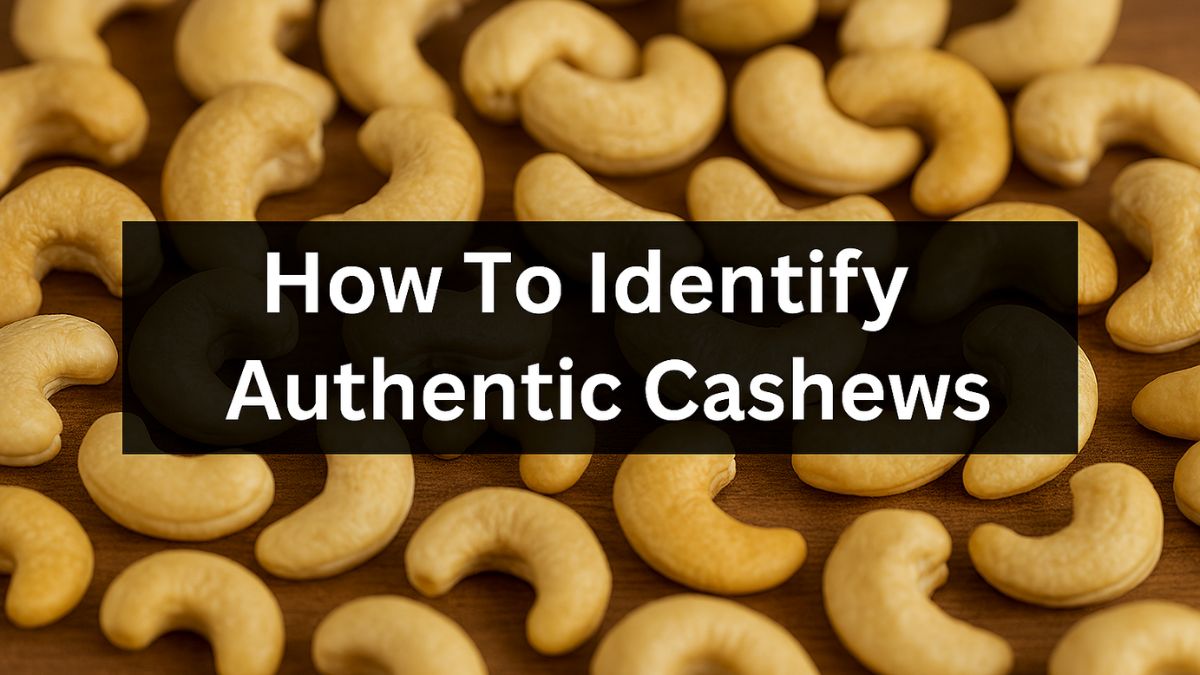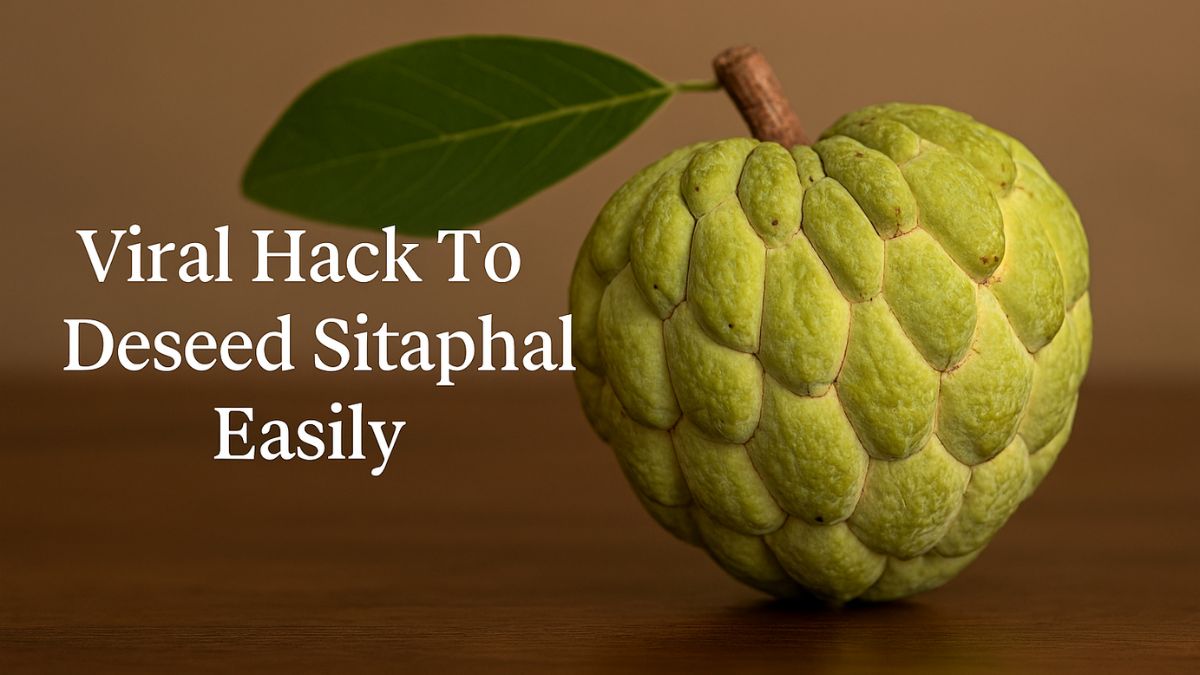Picture this: you are opening the masala dabba to sprinkle some black pepper on your soup or salad, but the familiar kick never comes. What if we tell you that the pepper you trust every day is not pepper at all? It may sound like an exaggeration, but fake and adulterated black pepper is slipping into kitchens across India more often than we realise. From papaya seeds disguised as peppercorns to glossy, mineral oil-coated grains that look picture-perfect but taste like nothing, counterfeit peppercorn has become a real concern.
And while most of us think "it cannot happen in my kitchen," the truth is, it easily can. The good part is that you do not need fancy equipment or a laboratory to check it. With a few easy tricks and a little kitchen common sense, you can tell real pepper from the fake kind in minutes.
Also Read: 5 Easy Food Adulteration Tests You Can Perform At Home, As Shared By Food Authority
Why Black Pepper Is A Popular Spice In Every Kitchen?
Native to Kerala's lush Western Ghats, black pepper has travelled from Indian kitchens to dining tables across the world. Even today, India remains one of the largest producers of this "black gold," and for good reason.
Beyond taste, it is packed with health benefits. Black pepper is rich in piperine, the compound that gives it that signature heat and helps the body absorb nutrients more effectively. It also supports digestion and has natural anti-inflammatory properties, making it a small but mighty addition to your diet.
In Ayurveda, black pepper has been used for centuries in countless remedies, from soothing a stubborn cough to aiding weight management and improving metabolism.
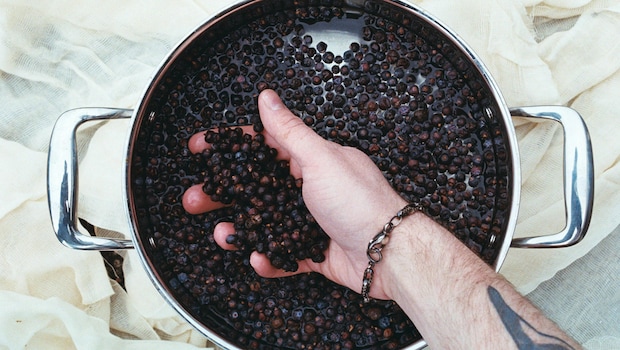
Photo Credit: Pexels
How Black Pepper Gets Adulterated?
With demand and prices rising, black pepper has become a prime target for food adulteration. Unscrupulous traders often mix cheaper substances to increase profit margins. Some of the most common adulterants include:
- Papaya seeds: They look almost identical to peppercorns but lack the signature pungency.
- Mineral oil: Gives an artificial shine but can be harmful if consumed.
- Dried berries or seeds: Added to increase weight cheaply.
- Sawdust or husk: Often mixed into powdered pepper to reduce production costs.
- Artificial colour or lead coating: Used to make unripe peppercorns appear mature, and both are dangerously toxic.
What Happens If You Consume Fake Black Pepper?
Adulterated pepper is not just a culinary let-down; it can also affect your health.
- Digestive issues: Papaya seeds or husk can cause stomach irritation and nausea.
- Toxic exposure: Lead and mineral oil may lead to long-term organ damage.
- Weakened immunity: Fake pepper lacks piperine, the compound that helps boost nutrient absorption.
- Hormonal imbalance: Regular intake of chemically treated pepper can interfere with metabolism and gut health.
Also Read: How To Check The Purity Of Indian Spices At Home
How To Spot Fake Black Pepper At Home?
1. The Water Test:
This one is as simple as it sounds. Drop a spoonful of peppercorns into a glass of water and watch what happens. Real pepper is dense and sinks to the bottom, while fakes, such as papaya seeds or lightweight fillers, tend to float. However, do not panic if a few genuine ones float too; some may trap air. Treat this test as your first clue, not the final verdict.
2. The Smell Test:
Trust your nose, it rarely lies. Crush a few peppercorns between your fingers and take a sniff. Real black pepper has a strong, spicy, earthy aroma that instantly wakes up your senses. Fake ones smell faint, rubbery, or have no fragrance at all. If it does not smell like pepper, it probably is not.
3. The Texture And Grind Test:
A gentle press or grind can tell you a lot. Real peppercorns are hard and resist pressure. When ground, they release a rich aroma and form a uniform, fine powder. Fake ones crumble easily, feel soft, or break unevenly. This test works especially well for catching dried berries or immature seeds pretending to be pepper.
4. The Burn Test:
If you want to be extra sure, you can try the burn test, but safely. Place a few peppercorns on a metal spoon and hold it over a small flame. Real pepper will give off a warm, spicy aroma, while papaya seeds smell bitter or rubbery. Make sure to do this in a well-ventilated area and handle the flame carefully.
5. The Colour Rub Test:
A quick rub can reveal if your peppercorns have been artificially dyed. Roll a few between your palms. If the colour comes off easily or stains your skin, they have likely been dyed. Natural pepper has a slightly dull, wrinkled look. If it looks too perfect, it probably is not.
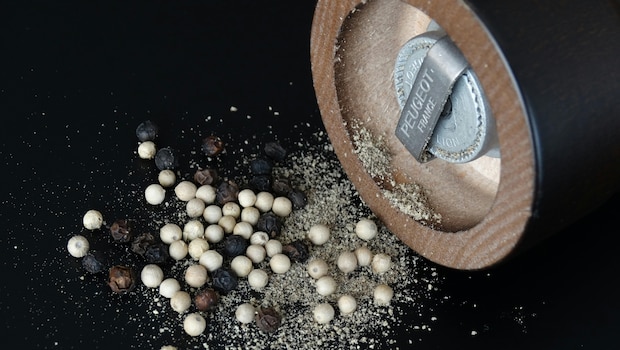
Photo Credit: Pexels
Tips To Avoid Picking Fake Black Pepper From The Market:
A few small habits can go a long way in keeping adulterated spices out of your kitchen:
- Go Whole Over Ground: Whole peppercorns are harder to adulterate. Invest in a small grinder or pepper mill for fresh flavour every time.
- Check Certifications: Always look for FSSAI, Agmark, or organic labels. These indicate safer and more reliable sourcing.
- Avoid Glossy Peppercorns: A shiny surface can mean mineral oil polish. Real pepper has a natural matte finish.
- Know Your Source: Buy from trusted brands, spice cooperatives, or local farmers you know.
Also Read: Real Saffron Vs Fake Saffron: 7 Simple Tests To Check Purity At Home
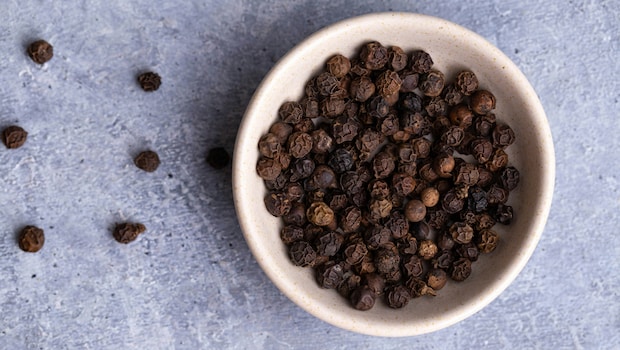
Photo Credit: UnSplash
Here Are Some Frequently Asked Questions:
Can powdered pepper be trusted?
Only if it comes from a reputed brand that follows proper food safety standards. Powdered pepper is easier to adulterate as impurities like husk, dust, or even ground papaya seeds can go unnoticed. Whenever possible, buy whole peppercorns and grind them fresh at home using a grinder or mortar and pestle. Freshly ground pepper always delivers stronger flavour and aroma.
Is organic pepper safer?
Generally, yes. Certified organic pepper is grown without synthetic pesticides or chemical fertilisers, making it both healthier and more environmentally friendly. However, not every product labelled "organic" is genuine. Always look for credible certifications such as FSSAI, Agmark, or India Organic. Authentic organic pepper usually has a natural, earthy look and aroma.
What is the best way to store pepper?
Pepper may be tough, but it still needs proper storage to stay fresh. Keep it in an airtight glass or steel container, away from sunlight, heat, and moisture. Humidity can make it lose flavour or grow mould over time. If you use a grinder, refill it in small quantities rather than all at once, as freshly ground pepper tastes significantly better.
So, the next time you pick a packet from the grocery store, pause for a moment and make sure it is truly spicy, not misleading. Because when it comes to spices, authenticity is non-negotiable.
About Somdatta SahaExplorer- this is what Somdatta likes to call herself. Be it in terms of food, people or places, all she craves for is to know the unknown. A simple aglio olio pasta or daal-chawal and a good movie can make her day.
